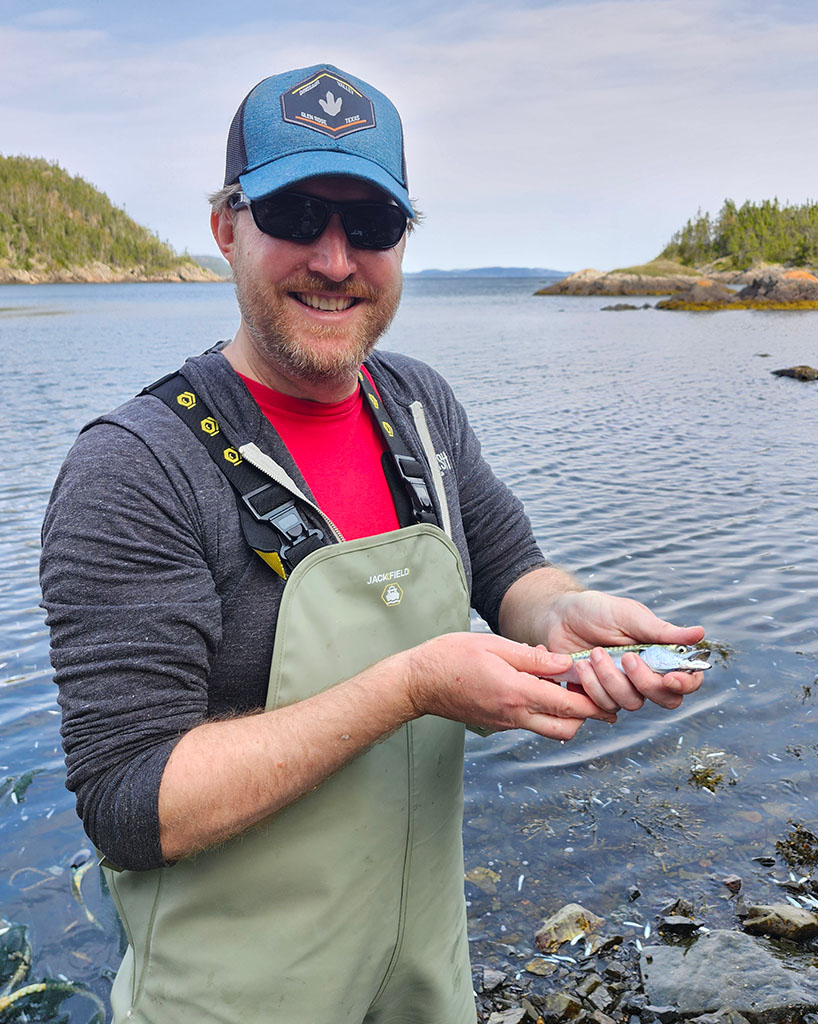Fellowship for $167,800 Funded through the Office of Polar Programs
Scientists know some species of fish can survive freezing temperatures in polar waters by producing antifreeze proteins, which suppress the formation of tissue-destroying ice crystals. But how the fish maintain these proteins at levels high enough to be effective, rather than filtering them out as waste through the kidneys, remains a mystery.

Postdoctoral researcher Daniel Wright received a $167,800 grant from the National Science Foundation Office of Polar Programs to determine how the fish respond to these seasonal changes, work which would offer a deeper understanding of kidney adaptation and address questions central to polar, evolutionary, biomedical and developmental biology. Wright works in the lab of Jacob Daane, assistant professor in the Department of Biology and Biochemistry in the University of Houston’s College of Natural Sciences and Mathematics.
Lessons learned about interruption and recovery of kidney function could help researchers better understand kidney disease in humans and other mammals. But Wright said the work should first yield important insights into the evolution of fish species and how they have been able to survive in polar environments.
“The kidney, as an organ, is poorly understood outside of humans and mammals. It’s underappreciated in its role in adaptation. There’s a lot of opportunity to advance knowledge,” he said. “Being able to produce antifreeze proteins is a necessary adaptation for these fish to exist in polar regions, and we think an underappreciated component of this is the kidney having some role in keeping these proteins in the blood.”
Wright’s work in the Daane lab involves studying kidney adaptation in various species of fish, including the genetic basis of kidney evolution and plasticity in fish. Unlike those in humans and other mammals, fish kidneys are able to change over time without losing the ability to function.
In mammals, kidney changes lead to kidney disease and are often fatal, Wright noted. Genes or specific cell types identified through this project as having a role in the recovery of kidney function after such a disruption could also be of interest to researchers working on human kidney disease, he said.
Looking for Structural Changes, Gene Expression
The NSF project centers on six species of cod: polar cod, pacific cod, walleye pollock, atlantic cod, greenland cod and saffron cod. Working with tissues he collected during trips to the National Oceanic and Atmospheric Administration’s Pacific Marine Environmental Laboratory in Newport, Oregon, and at Fisheries and Oceans Canada in St. John’s, Newfoundland, Wright will employ both histology and molecular techniques to compare kidney structures during summer and winter seasons.
Capturing high-resolution images of kidney tissue, he will try to determine any change in structure, including whether the structures atrophy or shrink. He expects the kidneys’ filtration units will atrophy in colder temperatures.
He then will use single-cell RNA sequencing to determine cell-specific gene expression, potentially yielding information about which parts of the genome are employed at different temperatures and environments, and ATAC-sequencing to investigate cis-regulatory enhancers associated with kidney function.
While the NOAA facility houses fish in huge tanks kept at specific temperature conditions – allowing researchers to study adaptive reactions to seasonal temperature change – fish from the Canadian agency in Newfoundland are wild caught.
Daane said the work could answer critical questions about how fish adapt to survive in icy polar waters. “We are interested in learning how the genome encodes plasticity to environmental cues and what can this plasticity teach us about the potential for tissues to recover from pathological states,” he said. “Understanding kidney function and plasticity is a critical component of fish adaptation in polar regions.”
He said there could be applications for human health, as well. “We are interested in understanding how it is that species are able to modify their kidney function without succumbing to pathological trade-offs of disrupted kidney activity. And we are interested in using this natural variation in fish as a guide to identify means by which we can promote healing in humans.”
Confirming the Findings
Some fish, including those living in Antarctica, have lost the structure within the kidney used to filter waste and other substances from the blood. Fish in the Arctic have mostly retained the structure, and Wright said this work could explain why.
“We think it’s important. It doesn’t seem like they would have retained it if it didn’t have a role, and we think it’s more important in the warmer waters (found in the Arctic in summertime),” Wright said. “Understanding that role, what it’s doing during the warmer temperatures, will help inform us about what it might mean for species that have lost the structure.”
Once the first phase of the research is complete, Wright may have the opportunity to go a step further and confirm his findings. Daane’s lab works with zebrafish, which are commonly used in biological research. If the cod studies yield the results Wright is anticipating, the lab can use CRISPR gene editing technology to modify zebrafish in order to see if the findings are replicated, that is, if the identified genes or gene regulatory mechanisms could be involved in reducing kidney function or facilitating recovery of the kidneys’ filtration mechanisms.
“There may be a lot of evidence as to why we think specific genes are important, why
they might be related to what we observe,” Wright said. “But the ultimate test is
to go into an organism and change those genes and see if they have the impact you
anticipated.”
- Jeannie Kever for College of Natural Sciences and Mathematics